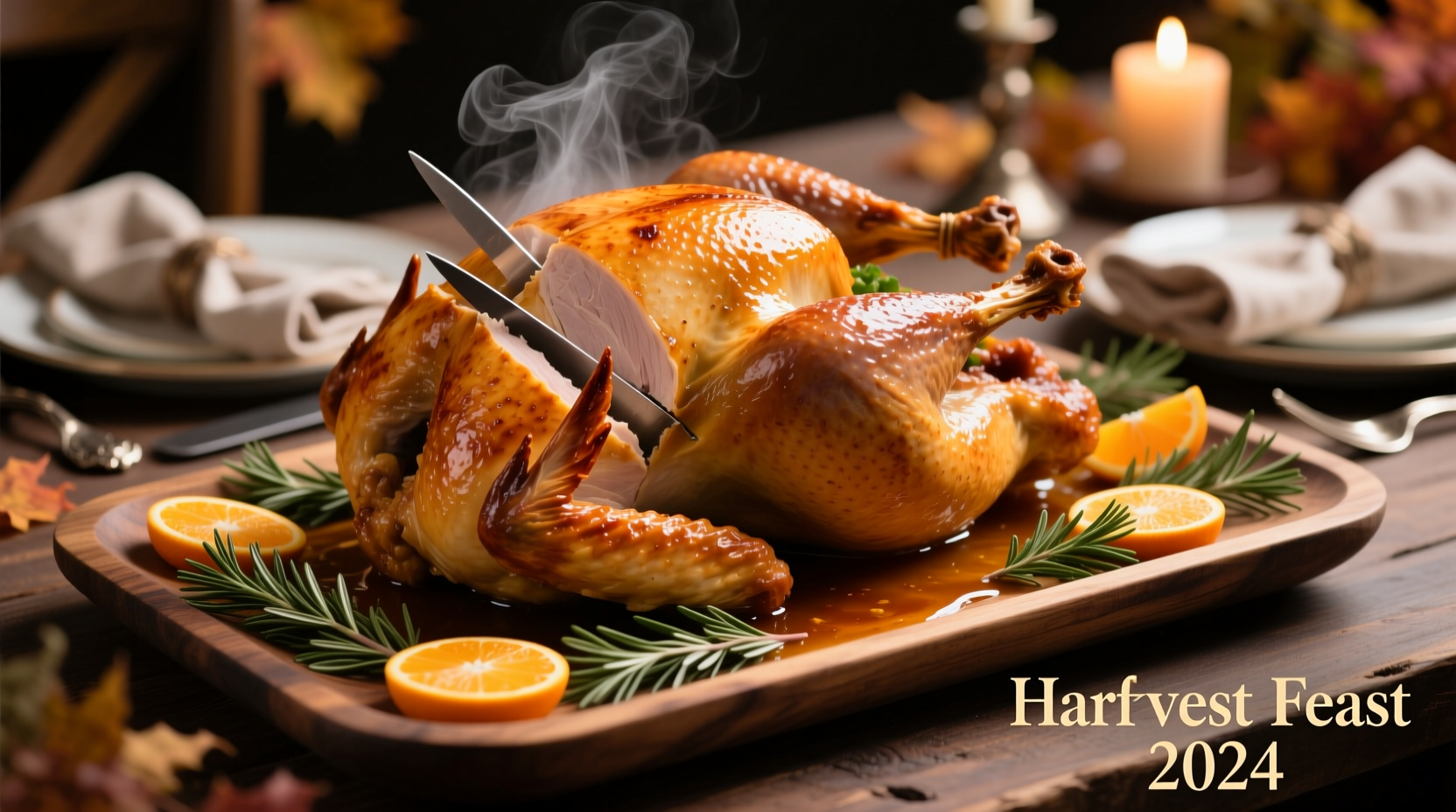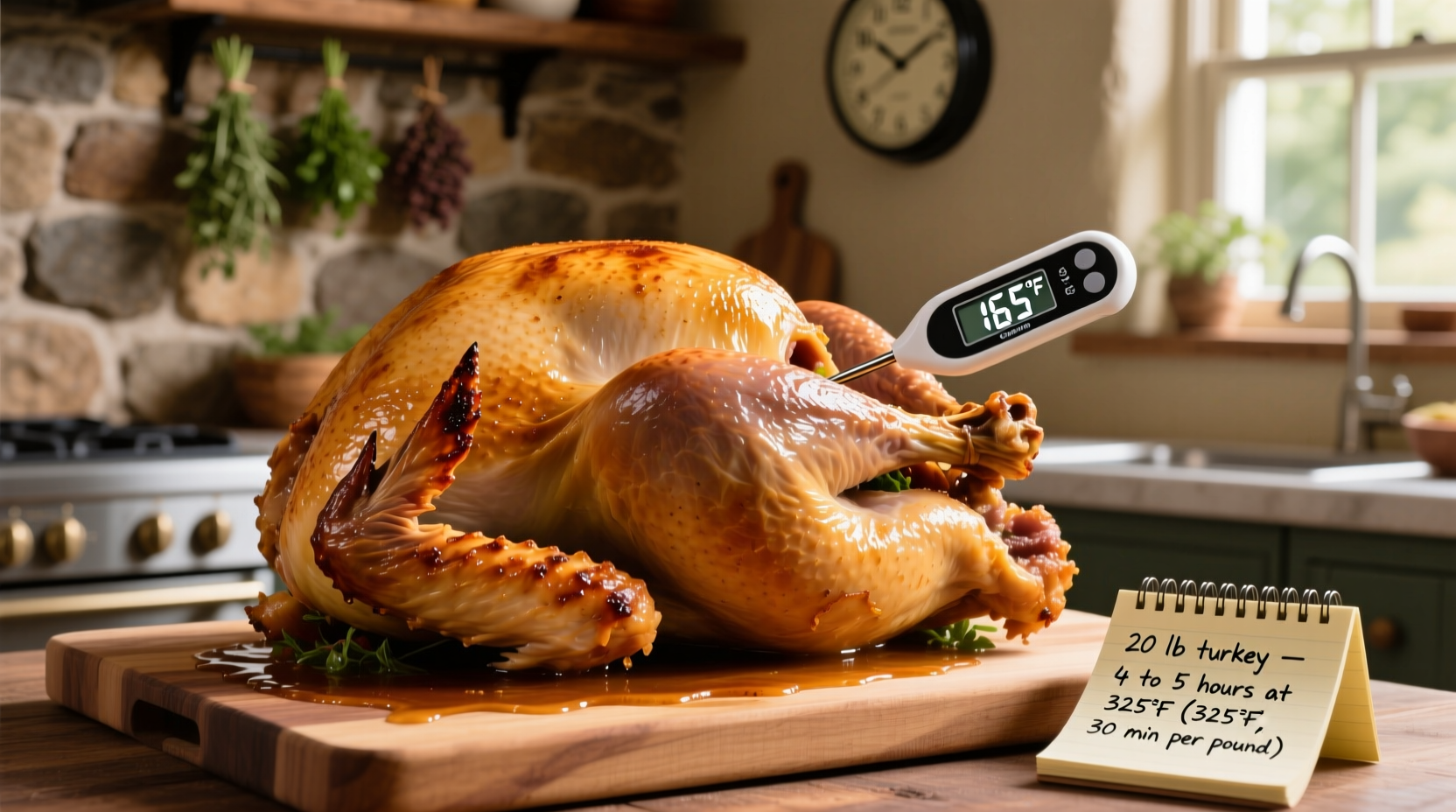The Complete Guide to Roasting a 20-Pound Turkey Perfectly
Nothing says celebration quite like a perfectly roasted turkey, but cooking a 20-pound bird can feel intimidating. Get it wrong, and you'll face dry meat or, worse, unsafe undercooked poultry. This guide delivers exactly what you need to know to roast your large turkey with confidence—no guesswork required.
Why Proper Cooking Time Matters for Large Turkeys
When you're working with a 20 lb turkey, precision becomes critical. Undercooked turkey risks salmonella contamination, while overcooked turkey results in dry, tough meat that ruins your holiday meal. The USDA Food Safety and Inspection Service emphasizes that poultry must reach 165°F internally to be safe for consumption, regardless of cooking method.
| Turkey Weight | Unstuffed Cooking Time | Stuffed Cooking Time |
|---|---|---|
| 12-14 lbs | 3-3½ hours | 3¼-3¾ hours |
| 14-18 lbs | 3½-4 hours | 3¾-4¼ hours |
| 18-20 lbs | 4¼-4½ hours | 4½-5 hours |
| 20-24 lbs | 4½-5 hours | 5-5½ hours |
Step-by-Step Roasting Process for a 20 lb Turkey
Preparation: Setting Up for Success
Proper preparation makes all the difference with large turkeys. Begin by thawing your turkey safely—allow approximately 5 days in the refrigerator for a 20-pound bird (24 hours per 4-5 pounds). Never thaw at room temperature. Once thawed, remove the neck and giblets, then pat the turkey completely dry with paper towels. This crucial step helps achieve crispy skin.
For optimal results, season your turkey the night before roasting. The National Turkey Federation recommends this technique as it allows flavors to penetrate deeper and helps the skin crisp up beautifully. Whether you choose a simple salt-and-pepper rub or a more complex herb blend, proper seasoning timing significantly impacts final flavor.

Roasting: Monitoring Time and Temperature
Preheat your oven to 325°F—this temperature provides the ideal balance between thorough cooking and moisture retention. Place your turkey breast-side up on a rack in a roasting pan. For a 20 lb turkey, expect approximately 13 minutes per pound of cooking time when unstuffed.
After the first 2 hours of roasting, begin checking the internal temperature. Insert your meat thermometer into the thickest part of the breast (avoiding bone) and the innermost part of the thigh. The USDA recommends checking multiple locations as large turkeys often cook unevenly. Remember that the temperature will continue rising 5-10 degrees during resting.
Doneness Check: Beyond Just Time
While timing provides a helpful guideline, the only reliable way to determine if your 20 lb turkey is done is by checking the internal temperature. The breast should reach 160°F and the thigh 165°F when removed from the oven, as carryover cooking will bring both to the safe 165°F mark during resting.
Another visual indicator is the color of the juices—when properly cooked, they should run clear, not pink. If using a pop-up thermometer, know that these often activate at 165°F but can be unreliable in large birds. Always verify with a digital thermometer for food safety.
Critical Food Safety Considerations for Large Turkeys
When cooking a 20-pound turkey, food safety becomes paramount. The FDA Food Code specifies that poultry must reach 165°F internally to eliminate harmful bacteria like salmonella and campylobacter. This requirement doesn't change based on turkey size—a larger bird simply takes longer to reach this critical temperature throughout.
For stuffed turkeys, the stuffing must also reach 165°F. Many food safety experts, including those at the USDA, recommend cooking stuffing separately to ensure both the turkey and stuffing reach safe temperatures without overcooking the bird. If you do stuff your turkey, prepare the stuffing immediately before use and fill the cavity loosely (about ¾ full) to allow proper heat circulation.
Troubleshooting Common Large Turkey Issues
Dry Breast Meat
This common problem occurs because white meat cooks faster than dark meat. For a 20 lb turkey, try tenting the breast with foil during the last hour of cooking. Alternatively, cook the turkey breast-side down for the first half of roasting time, then flip it over—this allows the darker meat to cook more evenly with the breast.
Uneven Cooking
Large turkeys often develop hot spots. Rotate the roasting pan 180 degrees halfway through cooking. If using a convection oven, reduce the temperature by 25°F and check for doneness earlier than standard guidelines suggest.
Undercooked Turkey
If your 20 lb turkey hasn't reached 165°F by the expected time, don't panic. Continue roasting and check the temperature every 15-20 minutes. Remember that opening the oven frequently extends cooking time significantly—try to minimize oven door openings.
The Essential Resting Period
Never skip the resting period for a large turkey! A 20-pound bird needs 30-45 minutes of resting time before carving. During this crucial phase, the juices redistribute throughout the meat, resulting in moister slices. Tent loosely with foil to maintain temperature without steaming the skin.
While your turkey rests, you can prepare gravy or side dishes. This waiting period isn't just about convenience—it's scientifically necessary for optimal texture and moisture retention in large poultry.











 浙公网安备
33010002000092号
浙公网安备
33010002000092号 浙B2-20120091-4
浙B2-20120091-4